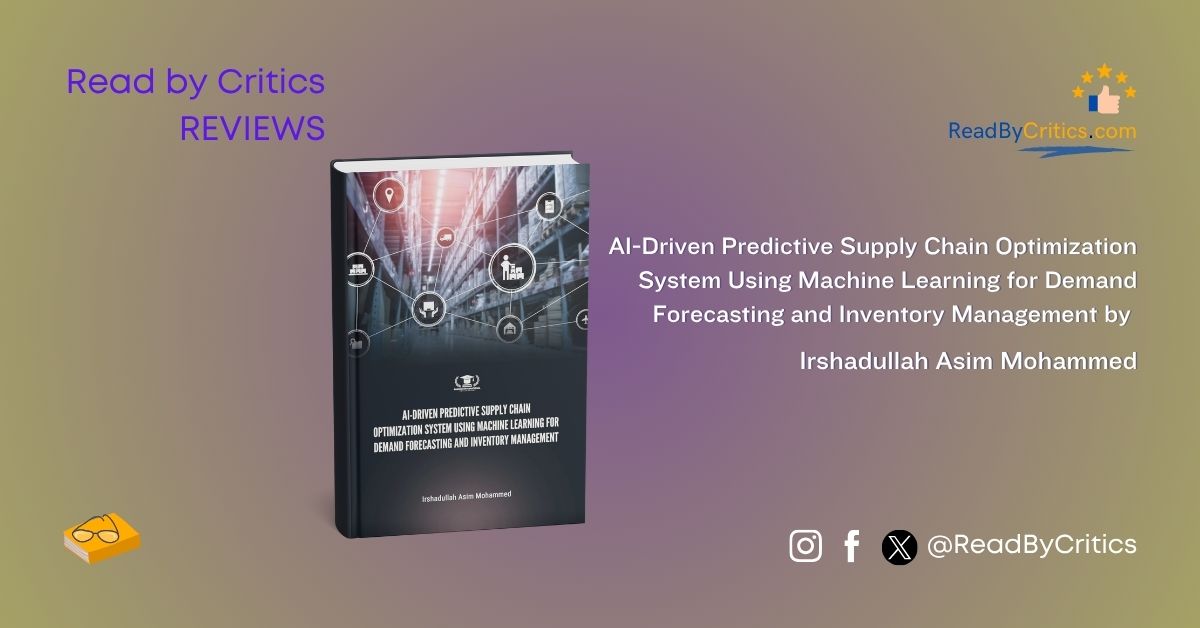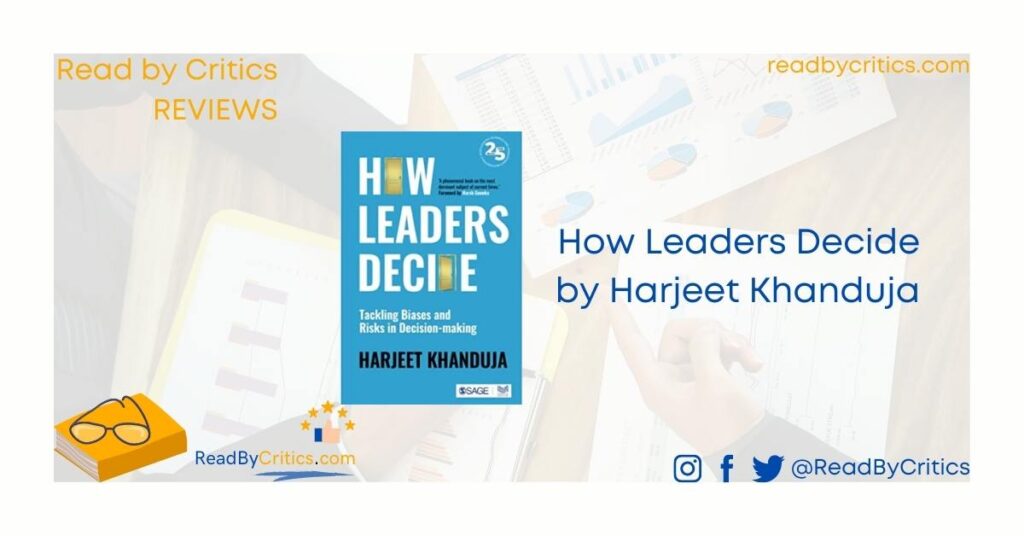The book AI-Driven Predictive Supply Chain Optimization System Using Machine Learning for Demand Forecasting and Inventory Management by Irshadullah Asim Mohammed stands at the intersection of technological innovation, industrial transformation, and academic advancement. In an era marked by volatility, uncertainty, complexity, and ambiguity, what industry experts often describe as the “VUCA world”, the book provides both a timely intervention and a forward-looking framework. Its publication in December 2024 is particularly significant, emerging at a time when global industries are grappling with post-pandemic disruptions, geopolitical uncertainties, and an increasingly digitised economy. The work situates itself not merely as a technical guide but as a comprehensive synthesis of knowledge, practice, and future-oriented vision that resonates across academia and industry alike.
At its core, the book acknowledges that the contemporary supply chain is no longer a linear or static entity. It is an ecosystem characterised by dynamic data flows, interdependencies, and real-time decision-making imperatives. The author’s understanding of this complexity is both conceptual and pragmatic. By anchoring the discussion in the convergence of artificial intelligence (AI), machine learning (ML), and supply chain management (SCM), the book successfully transitions the discourse from traditional descriptive systems to predictive and prescriptive paradigms. This shift is not presented as a matter of technological novelty but as a necessity dictated by market realities. With the global supply chain landscape undergoing what the author calls a “seismic transformation,” the book articulates how AI and ML serve as catalysts for reconfiguring operational efficiency, responsiveness, and strategic foresight.
One of the book’s most commendable features is its dual orientation. It is structured in a manner that makes it simultaneously accessible to industry practitioners and intellectually rewarding for scholars. The practitioner-oriented sections focus heavily on actionable insights, roadmaps, and implementation frameworks, while the academically grounded discussions elucidate theoretical models, algorithms, and performance metrics with rigour. This dual alignment enhances the book’s pedagogical and practical value. The author bridges the long-standing gap between industry applications and academic theorisation—a gap that has often impeded the practical deployment of advanced AI techniques in real-world logistics and supply systems.
For industry leaders, the book’s most valuable contribution lies in its operational pragmatism. The inclusion of a comprehensive roadmap for building an AI-driven predictive optimisation system provides a step-by-step guide that goes beyond conceptual exposition. The roadmap meticulously covers essential aspects, including data collection, preprocessing, model selection, system integration, scalability, and long-term maintenance. It also addresses practical challenges, such as data heterogeneity, interoperability, and quality assurance, which are frequently underexplored in theoretical treatments. By doing so, the book transforms what might otherwise remain an abstract technological vision into a tangible strategic framework. The reader is guided through the design of AI architectures that not only enhance predictive accuracy but also integrate seamlessly into existing enterprise resource planning (ERP) and warehouse management systems (WMS).
Moreover, the author’s emphasis on Key Performance Indicators (KPIs) and model evaluation techniques is particularly relevant to decision-makers who must justify technological investments. The book systematically outlines performance assessment frameworks that align AI-driven insights with business goals such as cost reduction, service level improvement, and sustainability. This orientation ensures that the deployment of AI systems does not remain an isolated technical exercise but becomes a measurable contributor to organisational performance. Such a holistic approach transforms the notion of AI adoption from being a technological upgrade into a strategic imperative.
From an academic standpoint, the book exemplifies substantial interdisciplinary scholarship. It synthesises foundational theories of operations management, data science, and decision analytics to construct an integrative framework for supply chain optimisation. Each chapter builds progressively upon the previous one, creating a cumulative understanding that is both deep and comprehensive. For instance, the sections on demand forecasting offer an insightful juxtaposition between classical models, such as time-series analysis and regression approaches, and advanced machine learning models, including neural networks and ensemble methods. This comparative analysis enables students and researchers to appreciate both the continuity and evolution of forecasting science. It also highlights the epistemic transition from deterministic to probabilistic and adaptive modelling paradigms.
The exploration of inventory management through AI and ML perspectives is equally robust. The author introduces readers to optimisation models based on reinforcement learning and stochastic processes, explaining how these can dynamically adjust replenishment decisions in response to changing demand patterns. The detailed explanations of algorithms and their real-world applicability make this section a rich resource for scholars engaged in computational logistics and predictive modelling research. Significantly, the author does not limit the discussion to mathematical abstraction but contextualises it within supply chain realities such as lead time variability, supplier reliability, and fluctuating customer expectations.
Another strength of the book lies in its extensive use of case studies, which serve as empirical validation for the theoretical constructs. These case studies demonstrate successful AI implementations across various industries, including manufacturing, retail, pharmaceuticals, and e-commerce. Through these narratives, the author demonstrates how organisations can achieve tangible benefits in forecasting accuracy, inventory turnover, and overall supply chain agility. The analytical treatment of each case reinforces the central argument that AI, when deployed intelligently, can transform the traditional reactive supply chain into a proactive and adaptive system. For both researchers and practitioners, these case studies offer replicable frameworks that can inspire further experimentation and adaptation.
The book also deserves recognition for its forward-thinking approach to emerging technologies, such as the Internet of Things (IoT) and blockchain. These technologies are presented not as peripheral add-ons but as integral enablers that enrich AI-driven systems. IoT, for instance, is shown to enhance data granularity and real-time visibility, while blockchain strengthens data integrity and transparency in multi-tier supply networks. This integrationist perspective reflects a sophisticated understanding of the digital supply chain ecosystem, where interconnectivity and data trustworthiness are as critical as algorithmic intelligence. Furthermore, the discussion of ethical and regulatory dimensions, such as data privacy, algorithmic fairness, and responsible automation, adds moral depth to what could otherwise be a purely technical discourse. It acknowledges the broader societal implications of AI and encourages a balanced, ethically informed approach to the adoption of technology.
From a scholarly perspective, the book contributes to the ongoing academic conversation about the epistemological transformation of management sciences in the age of artificial intelligence. It reflects the shift from human-dependent decision-making processes to machine-augmented intelligence systems. By critically examining traditional decision frameworks alongside emerging AI paradigms, the author invites a rethinking of managerial rationality itself. This aspect makes the book a helpful resource for research seminars, doctoral studies, and postgraduate courses in both business analytics and operations management.
For industry leaders, the text functions as a strategic compass in navigating the evolving industrial landscape. Executives and operations managers will find the book invaluable for understanding how AI can be leveraged to reduce operational inefficiencies, enhance resilience, and achieve sustainable competitive advantages. The book’s comprehensive treatment of supply chain design and management from an AI perspective equips decision-makers with tools to reimagine business models in the context of Industry 4.0 and beyond. Its focus on resilience, particularly in light of disruptions like the COVID-19 pandemic, underscores the necessity of agility and adaptability in global operations. By advocating for predictive and adaptive systems, the book directly responds to the challenges that modern supply networks face in volatile environments.
For new learners, the book serves as both an introduction and an advanced guide. It breaks down complex AI and ML concepts in a structured and comprehensible manner, making it approachable for readers without extensive technical backgrounds. The pedagogical clarity ensures that students of business management, logistics, and computer science can find relevance within their disciplinary boundaries while engaging with cross-disciplinary insights. The author’s explanations of model architectures, data pipelines, and evaluation frameworks provide a foundational learning experience, while the inclusion of real-world applications and future trends ensures sustained intellectual engagement.
Another noteworthy aspect is the book’s emphasis on scalability and sustainability. The discussion extends beyond immediate efficiency gains to consider the long-term implications of AI adoption, including energy consumption, carbon footprint, and the transformation of the workforce. The author’s holistic approach integrates environmental, social, and governance (ESG) perspectives, highlighting how AI-driven systems can support sustainable supply chain practices. This integration of sustainability within an AI framework makes the book particularly relevant in an era where corporate responsibility and green logistics are becoming critical dimensions of global competitiveness.
In the broader context of scholarship and professional practice, this work occupies a unique and vital space. It does not simply echo the prevailing enthusiasm for AI but interrogates its practical boundaries, challenges, and implications. Its scholarly rigour ensures academic credibility, while its practical insights ensure industrial applicability. The book is positioned as a reference text that can guide future research agendas, inform policy-making, and inspire innovation in the global supply chain domain.
In conclusion, AI-Driven Predictive Supply Chain Optimization System Using Machine Learning for Demand Forecasting and Inventory Management is not just a book about technology; it is a manifesto for the future of intelligent logistics. It bridges the worlds of theory and application, of data and decision, and of technology and ethics. For industry leaders, it provides a roadmap to operational excellence and strategic foresight. For students and researchers, it provides a solid theoretical foundation and serves as a gateway to advanced exploration. Its comprehensive scope, clarity of exposition, and balance between technical detail and strategic vision make it an indispensable contribution to both the academic corpus and the professional toolkit of modern supply chain management.
Get a copy from Amazon India by clicking here.
Review by Adarsh J for the ReadByCritics platform



